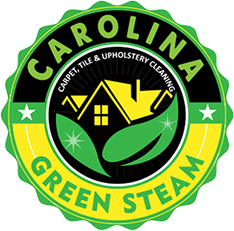Mold growth on tile and grout is a common issue faced by many homeowners, particularly in areas with high moisture levels like bathrooms and kitchens. Not only is it unsightly, but it can also pose health risks and deteriorate the integrity of your tiles and grout.
Causes of Mold Build-Up:
- Moisture: Moisture is the primary catalyst for mold growth. Bathrooms, kitchens, and other high humidity areas provide an ideal environment for mold spores to thrive. When water accumulates on tile surfaces and seeps into grout lines, it creates a breeding ground for mold and mildew.
- Poor Ventilation: Inadequate ventilation exacerbates moisture problems, allowing humidity to linger in enclosed spaces. Without proper airflow, moisture gets trapped, promoting mold growth on surfaces.
- Organic Matter: Mold requires organic matter to feed on for sustenance. Soap scum, body oils, food residue, and other organic debris commonly accumulate on tile surfaces and within grout lines, providing nutrients for mold growth.
- Grout Porosity: Grout is porous by nature, making it susceptible to water absorption. Once moisture penetrates grout lines, it becomes trapped, facilitating mold colonization and making it challenging to remove.

Solutions to Combat Mold Build-Up:
- Regular Cleaning: Establish a routine cleaning schedule to prevent mold growth. Use a mild detergent or specially formulated tile and grout cleaner to scrub surfaces thoroughly. Pay attention to grout lines where mold tends to accumulate.
- Proper Ventilation: Improve airflow in moisture-prone areas by installing exhaust fans or opening windows during and after showering or cooking. Adequate ventilation helps reduce humidity levels and discourages mold growth.
- Sealing Grout: Sealants provide a protective barrier over grout, reducing its porosity and preventing moisture penetration. Regularly reseal grout lines to maintain their integrity and inhibit mold growth.
- Dry Wet Surfaces: Promptly wipe down wet tile surfaces and dry them thoroughly after use. Focus on areas prone to moisture buildup, such as shower walls, bathtub rims, and kitchen countertops, to minimize mold-friendly conditions.
- Use Mold-Inhibiting Products: Consider using mold-resistant tile and grout products or applying mold inhibitors to surfaces to deter mold growth. These products contain ingredients that impede mold colonization, providing long-term protection against mold infestations.
- Professional Cleaning: For stubborn mold outbreaks or deeply ingrained stains, enlist the services of professional tile and grout cleaners. Professional cleaning treatments can effectively eliminate mold and restore the appearance of your tile surfaces.
Mold build-up on tile and grout is a persistent problem that requires proactive measures to address effectively. By understanding the underlying causes of mold growth and implementing preventive strategies like regular cleaning, proper ventilation, sealing grout, and using mold-inhibiting products, you can keep your tile surfaces mold-free and maintain a clean, healthy environment in your home. Don’t let mold take hold – take action to protect your tile and grout from unsightly and potentially harmful mold infestations.

